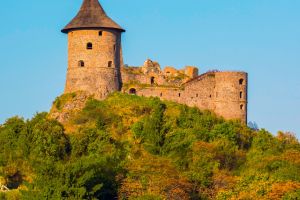The concept of greenways, pioneered by Frederick Law Olmsted with his design of the Emerald Necklace in Boston between 1867 and 1900, has spurred a worldwide movement towards the construction of interconnected park systems.
Over the last decade, this trend has gained significant momentum, with countries such as the United States, the United Kingdom, Canada, Italy, Germany, France, New Zealand, Egypt, Japan, and Singapore embracing greenway planning and development to various extents.
The United States: A Pioneer in Greenway Construction
Since the inception of the Boston Park system in 1867, the United States has continuously evolved its greenway network, forming a comprehensive ecological protection, recreation, and cultural preservation system. Today, the United States boasts the world's largest greenway construction projects, featuring an extensive array of ecological corridors spanning over 100,000 kilometers.
Singapore: The City's Green Network
In 1991, Singapore embarked on the establishment of a green network, connecting green spaces and water bodies across the country. This network comprises a four-tier system of regional parks, new town parks, neighborhood parks, and park tandem networks.
Currently, Singapore boasts 1,763 hectares of parkland, including 26 regional parks, 11 new town parks, 192 neighborhood parks, and 4,200 hectares of road green belts.
The city's "greenway in the city" encompasses a smooth 40-kilometer-long greenway, linking mountains, forests, major parks, isolated green belts, and coastal areas, providing recreational green spaces for its residents.
Ljubljana: The Model Greenway
In Ljubljana, the capital city of Slovenia, a 33-kilometer-long "greenway" encircles the urban area, forming a concentric "double ring" in conjunction with the main traffic road. Praised for its high continuity, simple design, and cost-effectiveness, the Ljubljana Greenway stands as a model for greenway construction projects.
The main path, a 4-meter-wide gravel pavement with high permeability, accommodates walking, running, and cycling around the city. This remarkable greenway integrates historical preservation, tourism, leisure, and ecological regulation, demonstrating its multifunctional features.
Ljubljana's Greening Structure: A Testament to Urban Culture
Ljubljana's greenway represents the embodiment of local urban culture. As the political, economic, cultural, educational, and administrative center of Slovenia, Ljubljana fosters a unique lifestyle, where its citizens have a dual identity as both urban dwellers and farmers.
Nearly every family owns a vacation cottage outside the city, and gardening is an integral part of their daily lives. The meticulous greening structure on both sides of the road adds to the city's charm. A green area, approximately 8 meters wide, adorns each side, featuring a single row of street trees.
In total, 7,400 trees, representing 49 different species, were planted along the route, with volunteers dedicating over 350,000 working hours to its construction.
The Concept of Reciprocal Urban and Rural Infrastructure Planning
The design and continual improvement of Ljubljana's greenway exemplify the municipality's commitment to fostering a reciprocal relationship between urban and rural environments. By encouraging a close connection between the capital's residents and the countryside, Ljubljana embraces a chic lifestyle while emphasizing the importance of sustainable urban planning.
Furthermore, the development of greenways worldwide has extended beyond the countries mentioned earlier. Countries such as Australia, Brazil, South Korea, and China have also recognized the value of greenway planning and have initiated their own projects.
In Australia, for example, the "Great Eastern Drive" in Tasmania offers a scenic coastal greenway, showcasing the region's natural beauty.


